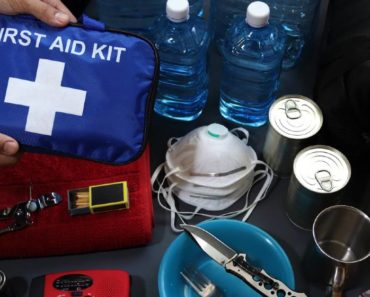Whether you’re stocking the pantry because yeast is on sale, or stocking the cabin in case you need to bug out for a while, having long-term yeast storage will be vital to being able to bake when you may not be able to shop. But before most folks get into long-term yeast storage they often want to know some basics about the process, including how to store yeast in the first place, what the overall shelf-life of yeast may be, and more.
We’re going to look at not only how to store yeast, but how to do it properly. We’ll cover how it works in the long-term, as well as how to test yeast you may already have on hand, or yeast that’s been stored for a while, for potential viability. Here’s everything you’ll need to know about storing yeast.
What Is The Shelf Life Of Yeast?
There are a few different answers to this, depending on how the yeast is prepared and stored, as well as what type of yeast it is. Fresh yeast must be stored in the refrigerator at all times, and will only have a shelf life of about 3 weeks total. You cannot store fresh yeast long-term, since it has essentially come out of “hibernation” already.
Your normal packets of active dry yeast are good for up to 2 whole years if they are unopened, and if they are opened and stored in a cool, dry environment like the fridge, they may keep for up to 4 months. If a package of dry yeast has been opened and then frozen, it should be used within 6 months, or the yeast may not survive to proliferate.
What About Yeast That Has Passed The “Expiration Date”?
The good thing about yeast, is that, unlike many other goods that are stored long-term, yeast will not become dangerous or poisonous if stored for too long. It is not hazardous to eat if it has been stored too long and died, it just simply will not function at that point as it is essentially inert fiber.
When yeast is stored in ideal situations and circumstances, it can lose as little as 10% but as much as 25% of its viability each year it’s stored. This means that while yeast that has been stored properly for 2 years may have as little as 20% loss in viability, it may also be as much as 50% dead by then. The higher the temperature of the storage area, the faster the yeast will die.
How To Test Yeast For Viability
If you come across some yeast that may have gotten a little warm in storage, or if you’ve recently found a cache of yeast that says it’s expired, you don’t have to throw that yeast away automatically. Even though the yeast shelf life may have expired, you can still test it to see if it’s viable and active. Here’s how to test your yeast:
- Get a quarter cup of warm water, water too hot or cold will not work
- Dissolve about 1 tsp of sugar in the warm water
- Add one packet or about 2 tsp of yeast to the mixture
- If the yeast is still viable, the solution will begin to foam and bubble in about 10 minutes
Now, if you find that the action of the yeast is minimal, you may just need to use more yeast in your recipe, or you may need to give the yeast a head start by feeding it first. If you need to use additional yeast, don’t worry, it will not affect the taste of your final product in any noticeable way. If you need to “wake it up” a little first, put yeast and sugar in a bowl, and add a little warm water to start the organisms feeding and multiplying before you add it to your recipe.
The Best Ways To Store Yeast Long-Term
The Fridge
The absolute best way to store your yeast is going to be in the refrigerator, in a sealed container that will exclude water and air. The ideal temperature range for long-term storage of yeast is between 32 and 38 degrees Fahrenheit. While most active dry yeasts can be stored at room temperature, this is an inconsistent way to store your long-term supply, and it can also reduce the viability of the yeast.
The Freezer
Many people wonder if you can store yeast in the freezer, and the answer is yes, and no. While you can store recently-opened yeast for up to 6 months in the freezer in dry storage, extended periods in sub-zero temperatures can reduce the viability of yeast just as badly as being in an 80-degree cabinet. The long period of intense cold will cause damage to the yeast culture on a cellular level, and will result in reduced potency over time.
Other Options
If you are looking to buy yeast in bulk and subsequently store it in more manageable amounts, you may want to consider mylar bags and vacuum sealing. While this can take a somewhat larger initial investment into the equipment needed to seal the bags, vacuum packing yeast into portions smaller than the large 1-pound bags, but larger than individual packets can be incredibly economical over the long-term.
Be sure you also include desiccant pouches in your bags to maximize the potential storage timeframe, but do not use oxygen absorbers as they are not healthy for the yeast. Just remember not to put the yeast in the freezer once it’s bagged. Many people storing yeast long-term will seal the bags, then store the bags in five-gallon buckets in a cool dry goods area, cellar, or basement.
This can have the advantage of not only keeping the yeast stored at optimal temperatures and conditions, but also creating more free space in the fridge for other preparations or ingredients.
Wrapping Up
No matter why you’re looking to store yeast, or for how long you need to store it, you need to know how to do it properly or by the time you need it, it will be non-viable. Be sure you keep it in a cool, dry place for long-term storage. Remember that the freezer will work, but you have about a 6-month timer to use that yeast or it too may become useless.




























